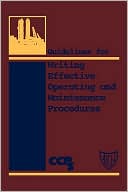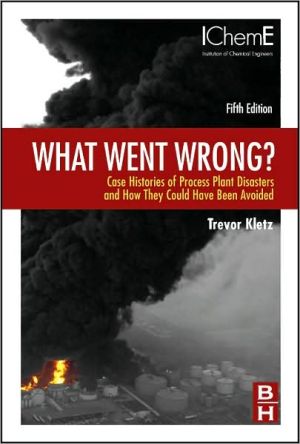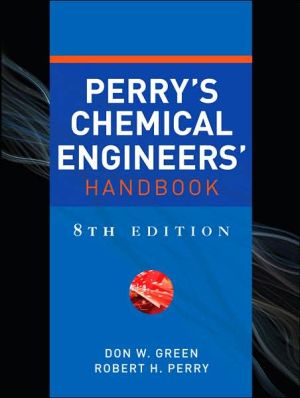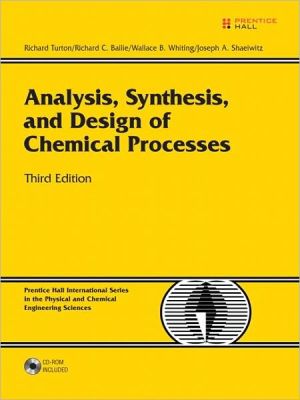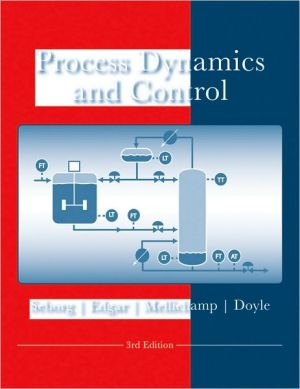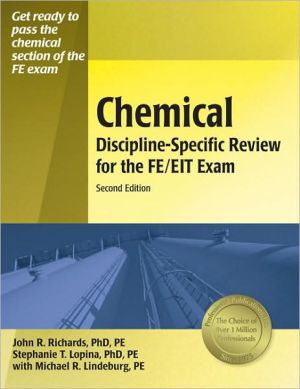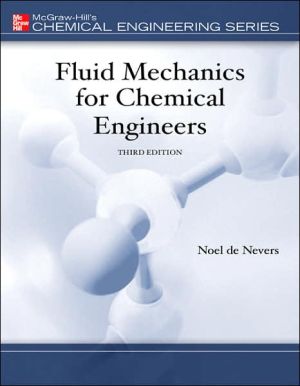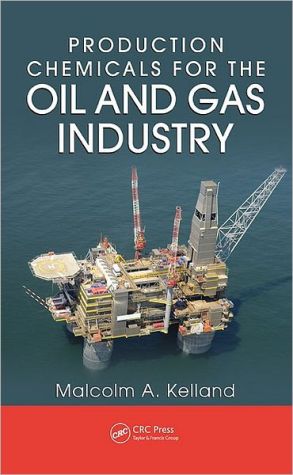Guidelines Writing Op Maintnc
Search in google:
The EPA investigation of a 1994 chemical plant tragedy concluded that "the explosion resulted from a lack of written safe operating procedures…" While good written procedures can't guarantee zero accidents, they can reduce the number of accidents caused by human error. This new book shows how to remedy this problem through selecting and implementing actions that promote safe, efficient operations and maintenance, improve quality, continuity, profitability and cost control, build upon and record process experience, and promote the concept that operating and maintenance procedures are vital plant components. It includes practical samples of procedure formats, checklists and many references. Booknews An aid for writing and implementing procedures for operating and maintaining chemical processes. Not intended as a compliance manual for regulations, nor a complete description of any of the processes used as examples. The topics include safety, environmental and quality considerations; designing a procedure management system; emergency procedures; and development costs and benefits. Developed by the Institute's Center for Chemical Process Safety. Annotation c. Book News, Inc., Portland, OR (booknews.com)
Preface. Acknowledgments. Glossary. Chapter 1. Introduction to Effective Procedure Writing. 1.1. Why Was This Book Written? 1.2. Book Objectives. 1.3. The Current Worldwide Trend Toward Procedures. 1.4. Who Should Use This Book? 1.5. Where Do You Go From Here? Chapter 2. Process Safety Environmental, and Quality Considerations. 2.1. Purpose. 2.2. Understanding the Guidelines and Regulations. 2.3. Voluntary Guidelines. 2.4. Governmental Regulations. 2.5. Quality Considerations. 2.6. Some Elements of Effective Procedures and Procedure. Management Systems. 2.7. Additional Considerations. 2.8. Conclusion. Endnotes. Chapter 3. How to Design An Operating and Maintenance Procedure Management System. 3.1. Purpose. 3.2. The Importance of Written Procedures. 3.3. Elements of a Comprehensive Procedure Management System. 3.4. Determining Procedure Management System Requirements. 3.5. Evaluating Your Current Practices. 3.6. Identifying Your Resources. 3.7. Designing and Implementing Your Procedures Management System. 3.8. How to Determine Which Procedures to Write. 3.9. Implementing a Procedure Project. 3.10. Procedure Training. 3.11. Maintaining and Improving Your Procedure Management System. 3.12. Conclusion. Chapter 4. Writing Operating and Maintenance Procedures. 4.1. Purpose. 4.2. What Resources Do You Need Before You Begin Writing? 4.3. What Do We Know About the Procedure. 4.4. Considerations for Effective Procedures. 4.5. Importance of Procedure Format. 4.6. Introductory Sections. 4.7. Procedure Steps Section. 4.8.Drafting the Procedure. 4.9. The Procedure Review and Approval Cycle. 4.10. Special Considerations for Maintenance Procedures. 4.11. Batch Process Considerations. Chapter 5. Elements of Effective Procedures. 5.1. Purpose. 5.2. Importance of Procedure Evaluation Criteria. 5.3. Who Will Use the Procedure Evaluation Criteria? 5.4. Procedure Checklists Elements. Endnotes. Chapter 6. Writing Emergency Operating Procedures. 6.1. Purpose. 6.2. Defining Events Requiring Emergency Operating Procedures. 6.3. Identifying Emergency Situations. 6.4. Developing and Writing Emergency Operating Procedures. 6.5. Directing the User to the Correct Emergency Operating Procedure. 6.6. Incorporating Human Factors in Emergency Operating Procedures. 6.7. using Decision Aids. 6.8. How Emergency Operating Procedures Link to the Emergency Response Plan. Endnotes. Chapter 7. Procedure Control. 7.1. Purpose. 7.2. What Is Procedure Control? 7.3. Controlling Procedure Revisions and Development. 7.4. Who Should Review the Procedures? 7.5. Procedure Approval. 7.6. Evaluating Procedures In Use. 7.7. Electronic Document Control. Chapter 8. Procedure Development Costs and Benefits. 8.1. Purpose. 8.2. reasons for Procedure Development. 8.3. Procedure Development Costs. 8.4. Return on Investment: Improvements You Can Expect from Effective Procedures. Endnotes. Appendix A. Selected Procedure Initiatives, Consensus Codes, and Regulations Affecting Procedures. Appendix B. Common Points of API, OSHA, and EPA. Appendix C. How to Determine the Tasks That Require Written Procedures. Appendix D. Procedure Performance Evaluation. Appendix E. Procedure Criteria Checklist. Appendix F. Sample Procedure Formats. Appendix G. Sample Formats of Operating Limits Tables. General References. Index.
